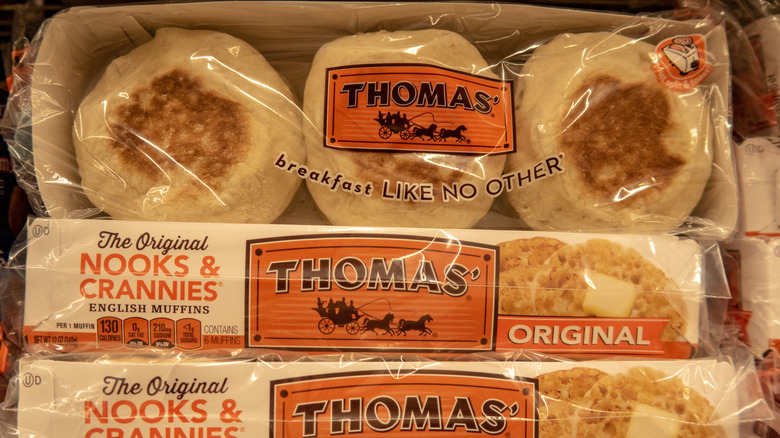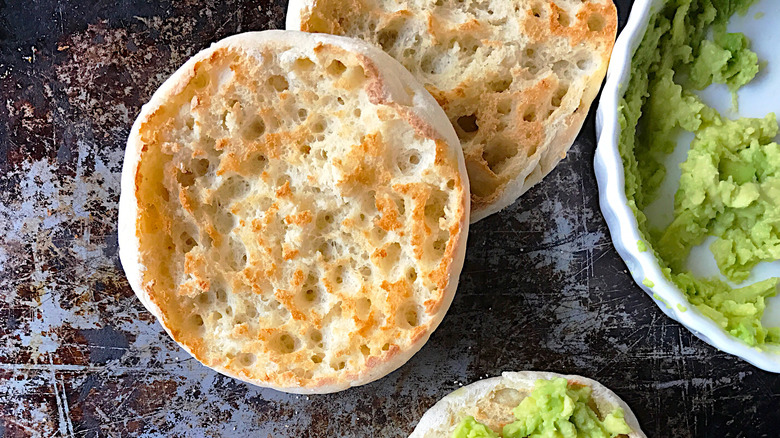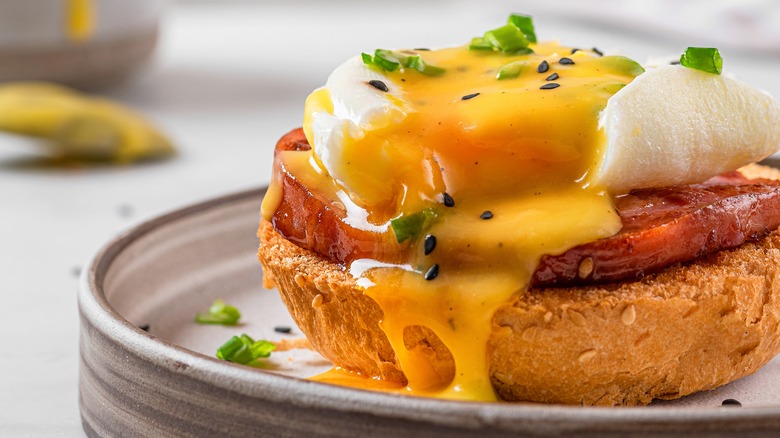What Are English Muffin 'Nooks And Crannies' Anyway?
For such a common breakfast food in the United States English muffins are very distinctive. Much to the amusement of children around the country, and perhaps the curiosity of some adults, these baked goods are craggy and full of crevices. While they certainly come in handy for holding a variety of sweet or savory toppings, it's hard not to wonder what these holes are and where they came from.
It's a common myth that English muffins were invented in the United States by Samuel Bath Thomas. Though he certainly put his own spin on the product, a form of the English muffin existed in England in a similar capacity. It wasn't until 1880 that Thomas began selling his muffins in the United States. What sets the American variety of English muffins apart, however, are the holes, aka the "nooks and crannies." So what gives these muffins their nooks and crannies, and where did this phrase originate?
Why English muffins have holes
English muffins have a unique texture. Though they closely resemble English crumpets and are one of many varieties of baked goods commonly eaten for breakfast, their insides have a look and feel that is not found anywhere else — to put it bluntly, they're full of holes.
There is a scientific reason why English muffins are full of holes. According to Gold Medal Bakery, Thomas' English muffins did not contain baking soda. In normal griddle muffins, such as crumpets, baking soda helps air rise to the surface and escape from the dough while it is baking. Without this ingredient, however, pockets of air form inside the muffin, which become trapped and expand into holes.
These holes give English muffins their distinctive texture and set them apart from traditional muffins in England. In addition to making it easy for English muffins to hold toppings, these holes cause the surrounding dough to become thin. This makes it crisp up easily when cut in half and toasted — another defining textural feature.
Why call them nooks and crannies?
"Nooks and crannies" is a funny phrase to use when describing an English muffin. Beyond being a common figure of speech, a "nook" generally refers to a corner, and a "cranny" refers to a small crevice. Considering these definitions, this phrase describes the holes in each half of an English muffin with surprising accuracy.
The use of the phrase in this context was coined by Thomas' advertising in the early 1980s — over a century after these holes made his muffins famous. Though it's an unusual way to describe a baked good, it makes sense given that the holes are the defining feature of English muffins.
Today, the slogan "nooks and crannies" is commonly associated with Thomas' English muffins, and the nooks and crannies are what set his product apart from other English muffin brands. Thanks to these craters, English muffins are easy to load with butter, jam, egg yolks, or whatever one desires with breakfast. Next time you enjoy eggs Benedict while out for brunch, you can thank Samuel Bath Thomas for this textural phenomenon.


